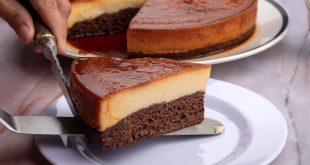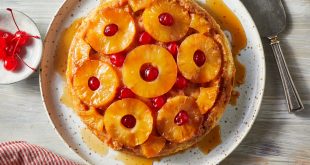Pianono with soft, pillowy sponge cake and sweetened margarine filling is the perfect accompaniment to coffee or tea. This Filipino-style jelly roll is delicious for breakfast or midday snacks!
What is Pianono
Pianono or Pionono is a type of pastry popular in Spain, South America, and the Philippines. It was named after the late Pope Pius IX or ‘Pio Nono’ as the good people of Italy called him, where the Pope hailed. However, the original creator of Pionono is from Santa Fe, Granada of Spain, Ceferino Ysla Gonzalez, who is a devotee of the Virgin Mary.
The story says that years after Pope Pius IX proclaimed a dogma of the Immaculate Conception, Gonzalez decided to pay homage by creating these mini bite-size cakes shaped in the likeness of the Pope and named them after him.
The Filipino version
Like its Spanish and South American counterparts, wherein bread or pastry dough is rolled around various fillings, the Filipino-style Pianono is a jelly roll consisting of a soft, pillowy sponge cake wrapped around a mixture of margarine and sugar. It’s also often adapted to include local flavors such as ube, mango, and mocha.

Use of cornstarch
Pianono cakes are soft and airy and the key to this light texture is using cake flour due to its low protein content.
But since cake flour is not a pantry staple in most kitchens, this recipe uses a mix of cornstarch and all-purpose flour for convenience. Part of the all-purpose flour is replaced with cornstarch to inhibit the formation of gluten in the all-purpose flour, resulting in a more tender crumb.
A sponge cake like this Filipino jelly roll is mostly leavened by eggs. The whites are whipped to incorporate air before baking and then gently folded into the yolk batter, giving the cake a lift.
Tips On Making Meringue
- Eggs are easier to separate when cold, but allow the egg whites to reach room temperature before whisking to create more volume.
- Use eggs that are fresh if possible, they might not create as much volume as older (3-5 day-old) eggs, but they make a more stable meringue.
- Make sure there is not a speck of grease, fat, or even a smear of yolk in the whites, which will prevent them from foaming properly.
- For best results, use clean, grease-free bowls and whisk attachments. Use glass or metal bowls as plastic can have a greasy film that will keep the whites from whipping up to full volume.
- Avoid using high speed while whisking or beating the whites. As it incorporates more air and creates larger bubbles, it tends to deflate the meringue during or after baking.
Stages of whipping egg whites
As a guideline, here are visual examples of each step.

Frothy Stage-mixture is a foamy and cloudy liquid with large bubbles.

Soft Peaks Stage-egg whites have a slight sheen and fine-textured bubbles. Peaks begin to form when beaters are pulled from the foam but are too delicate to hold shape.

Stiff Peaks Stage-mixture is glossy, thick, and very stiff. Peaks hold up straight without collapsing.

How to serve and store
- Slice into portions and serve for breakfast or midday snack with coffee, tea, or your favorite refreshment.
- To prevent the cake from drying out, transfer to an airtight container or wrap in cling wrap. Stored properly, it will keep at room temperature for up 3 days.
- For longer storage, wrap the cake tightly with plastic film to lock in moisture and freeze for up to 3 months. Thaw at room temperature when ready to eat.
Want more delectable jelly roll treats? Try this brazo de Mercedes!
Did you make this? Be sure to leave a review below and tag me @kawalingpinoy on Facebook and Instagram!

Pianono (Filipino Sponge Cake Roll)
Ingredients
- 5 pieces eggs
- 1/2 teaspoon cream of tartar (optional)
- 1/2 cup granulated sugar
- 1/2 cup milk
- 1 teaspoon vanilla extract
- 1/2 cup flour
- 2 tablespoons cornstarch
- 1 1/2 teaspoon baking powder
- 3 tablespoons powdered sugar
FILLING
- 1 stick margarine, softened
- 2 tablespoons granulated sugar
Instructions
-
Separate egg yolks from egg whites.
-
In a bowl, beat the egg whites using a mixer at low speed for 1 minute or until frothy.
-
Sprinkle the cream of tartar on top and continue beating until soft peaks form.
-
Gradually add 1/4 cup of the granulated sugar, a tablespoon at a time, while continuously beating. Once all sugar is added, turn up the speed to medium and continue beating the meringue until it forms stiff glossy peaks.
-
In a large bowl, cream together the egg yolks, the remaining 1/4 cup sugar, milk, and vanilla extract until it becomes light in texture and color.
-
Sift the flour, cornstarch, and baking powder and add to the egg yolk mixture. Mix well.
-
Gently fold in a third of the meringue into the egg mixture and then add the rest and fold until well combined.
-
Pour the batter into a 15x10x1-inch pan lined with wax or parchment paper.
-
Bake in a 375 F oven for about 15 minutes or until the cake is golden.
-
Remove from the oven and loosen the edges of the cake. Transfer the cake including the wax paper to a rack and allow to cool.
-
Dust a wax or parchment paper with powdered sugar and invert cake onto the paper. Gently peel the other wax paper off the cake.
-
Beginning with the narrow side, roll the cake up together with the wax paper. Let it cool down completely, seam side down, for 10 to 15 minutes.
-
Once the cake has cooled, gently unroll and spread cake with softened margarine and sprinkle with granulated sugar and re-roll.
-
Cut into 1-inch thick slices to serve.
 Saavi Ki Savaari Easy & Healthy Recipes, Beverages, Food Articles
Saavi Ki Savaari Easy & Healthy Recipes, Beverages, Food Articles



